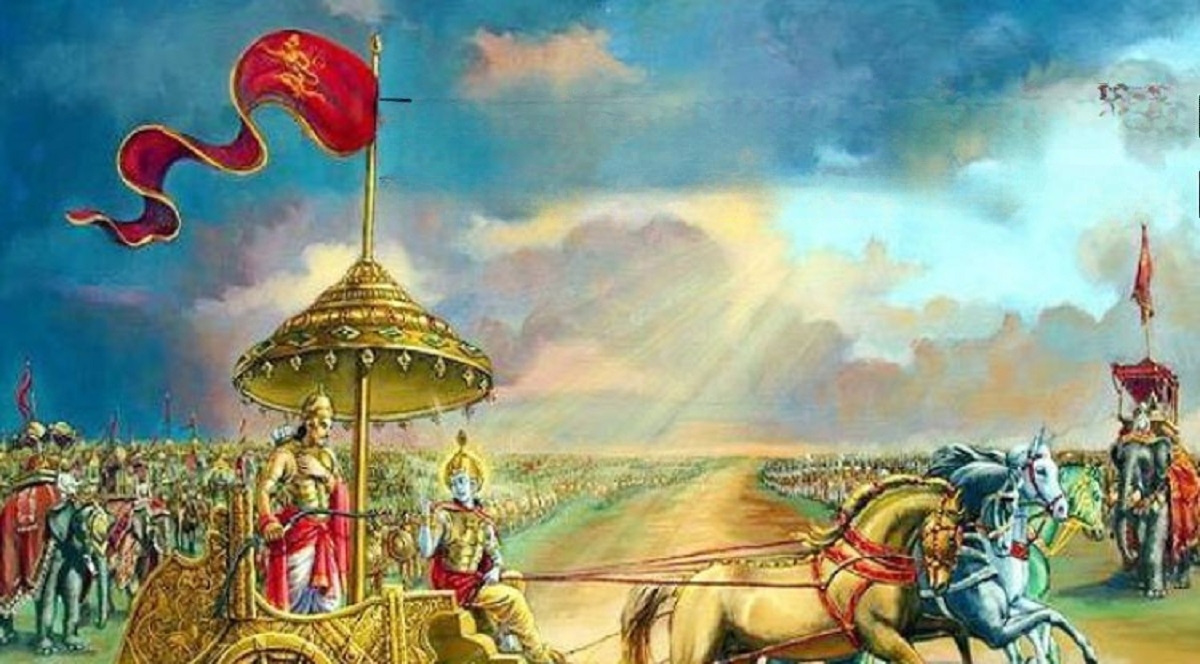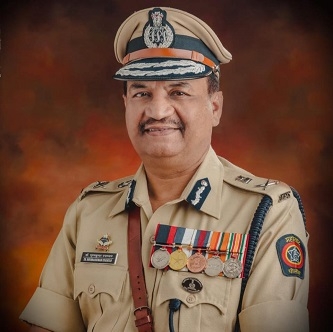Nervous breakdown of Arjuna
30 Mar 2025 08:52:55

By DR BHUSHAN KUMAR UPADHYAYA :
Divided into eighteen chapters, the Bhagavadgeeta
starts with grief and ends
with enlightenment and liberation. The first chapter is named as
the Arjuna- Vishada- Yoga or the
chapter dealing with the grief of
Arjuna. Arjuna was a celebrated
warrior of the Mahabharata time.
He was confident enough to win
the war of the Mahabharata. But
as soon as he enters the battle
ground, he falls into a deep trap of
despair, sadness, confusion, desperation and escapism.
He wants to withdraw from the
war, being overwhelmed by seeing his own close relatives arrayed
against him and his army in the
battle ground. Negative tendencies
overpower his rational mind. His
emotions hijack his intellect. His
mental resilience is shattered and
he is in a state of deep depression.
He loses the connection between
his subjective and objective mind.
His body is agitated and mind is
chaotic.
His unhealthy condition of
the mind injects a strong spirit of
cowardness in his personality. He
is in a state of severe distress and
suffers from withdrawal symptoms. Vedavyasa has given an apt
description of Arjuna who is suffering from neurosis. His limbs are
sinking. The mouth is parched. His
body is experiencing severe shivering and Arjuna has goosebumps.
The bow slips from his hands. The
skin burns and he is not able to
stand straight. The mind is racing
like a whirlpool.
As a result he misinterprets and
misconstrues the things and facts.
He starts glorifying escapism and
cowardice couched with the language of pity, non-violence and
compassion. He is displaying a
false sense of renunciation. He
even goes to the extent of misinterpreting spiritual scriptures to
justify his withdrawal from his
bounden duty. He is so depressed
that he does not want victory,
pleasure and even the kingdom of
the three worlds at the cost of the
war. Arjuna represents every individual who suffers from some
despair or other in the battle of
life.
The modern theory of psychology describes all these symptoms
associated with nervous breakdown. A person with psychosomatic disorders behaves like this.
These are the researched symptoms of a split personality. This is
called a neurotic state characterised by anxiety, distress and
difficulty in coping with the day to
day life routine. According to neuroscience, in such a state of the
mind, the limbic system of the
brain becomes so strong that it
shuts down the rational brain.
Emotional part of the brain gets
activated and the person is so
overwhelmed that he loses his
logical and rational thinking. The
control of the intellect over the
emotions is totally lost .
Psychology and psychiatry prescribe counselling for such
patients. The counsellor first
assesses the mental condition and
makes a diagnosis.
Mental, emotional
and behavioural
patterns are
observed. The
counsellor uses
different psychological and therapeutic techniques
and approaches to
treat the patient.
The best part of
the counselling is
the method of conversation
between the patient and the
counsellor. In the case of Arjuna
after assessing and diagnosing his
mental state, Lord Krishna starts
the different techniques and
approaches of counselling
through conversation which has
emerged in the form of the
Bhagavadgeeta. One by one we
will see these mental, emotional
and spiritual techniques of counselling in the form of self development in the later articles covering
all the remaining seventeen chapters of the Bhagavadgeeta.

(The writer is Former DG
Police & CG, Homeguards,
Maharashtra)
■